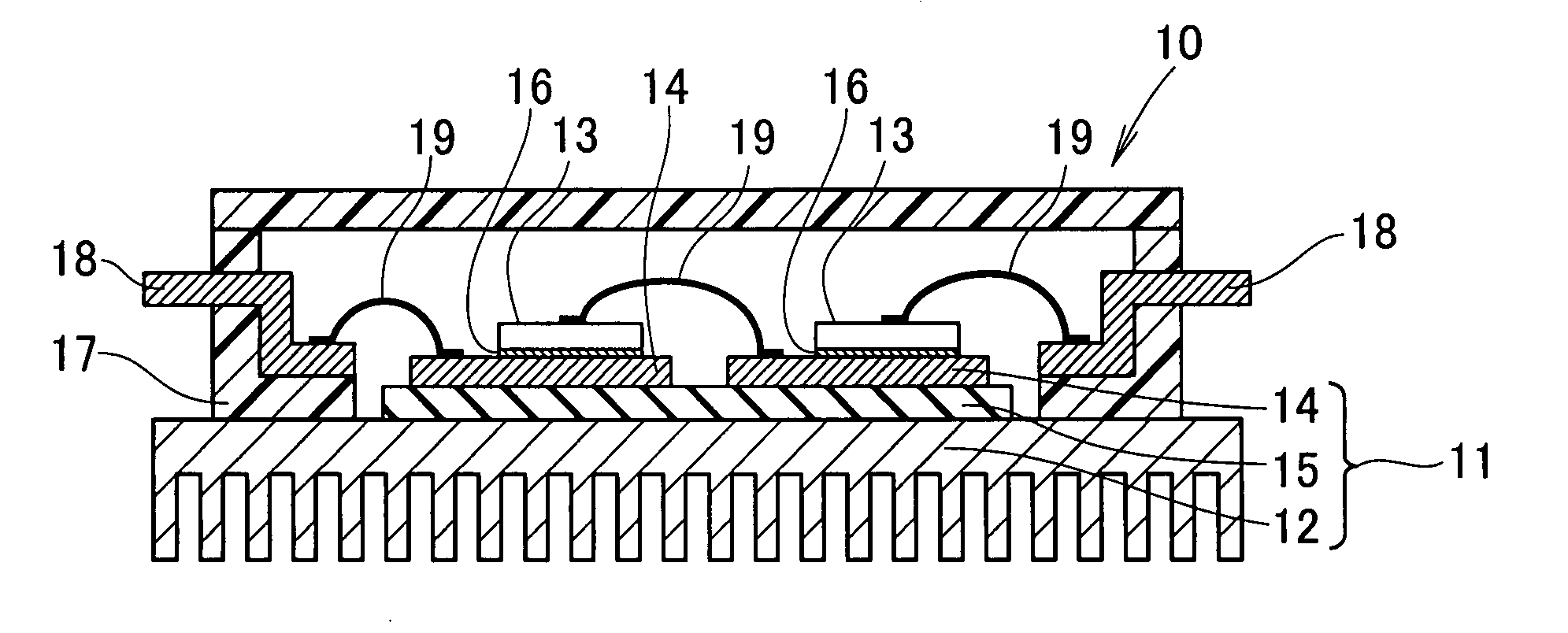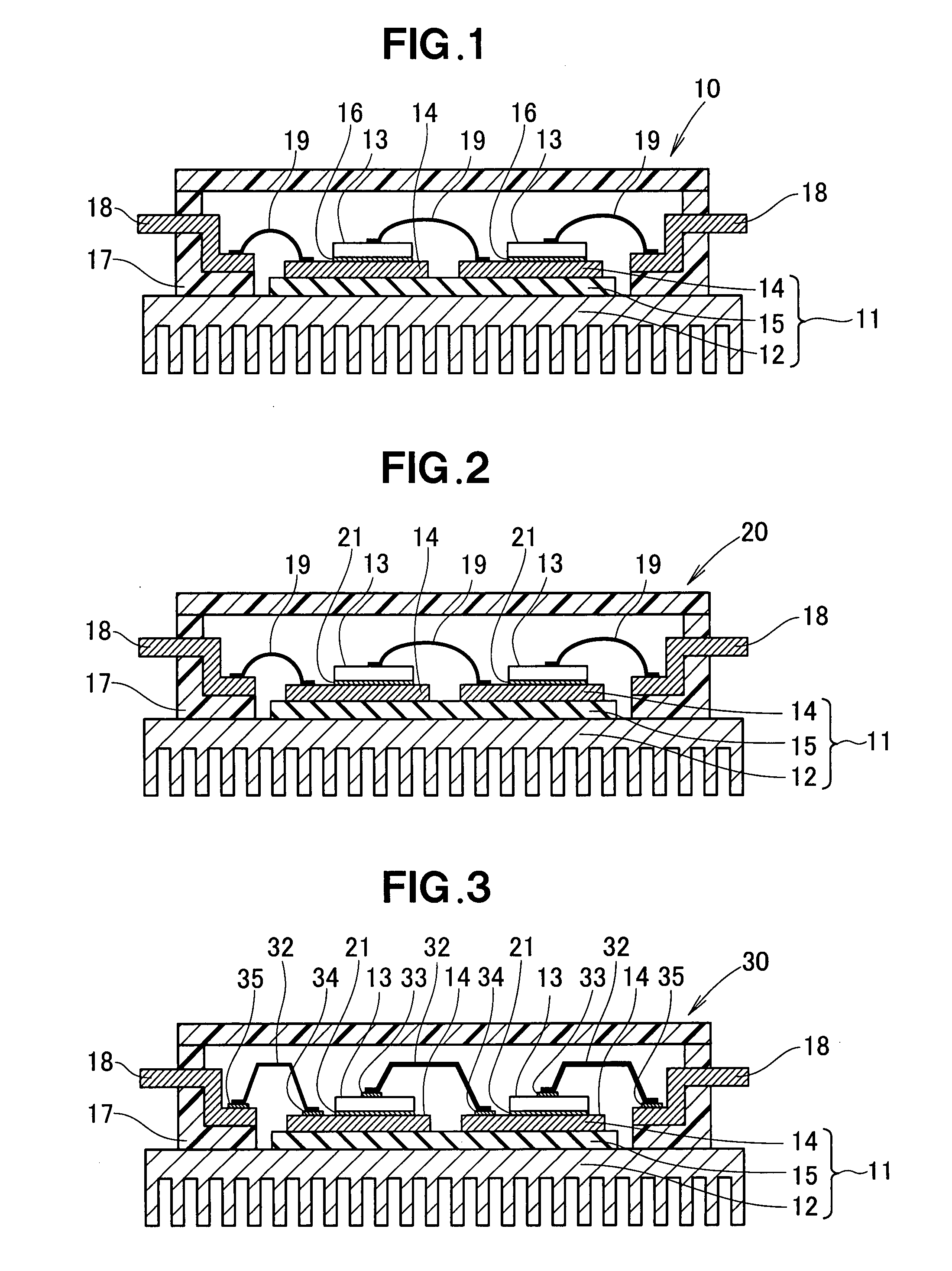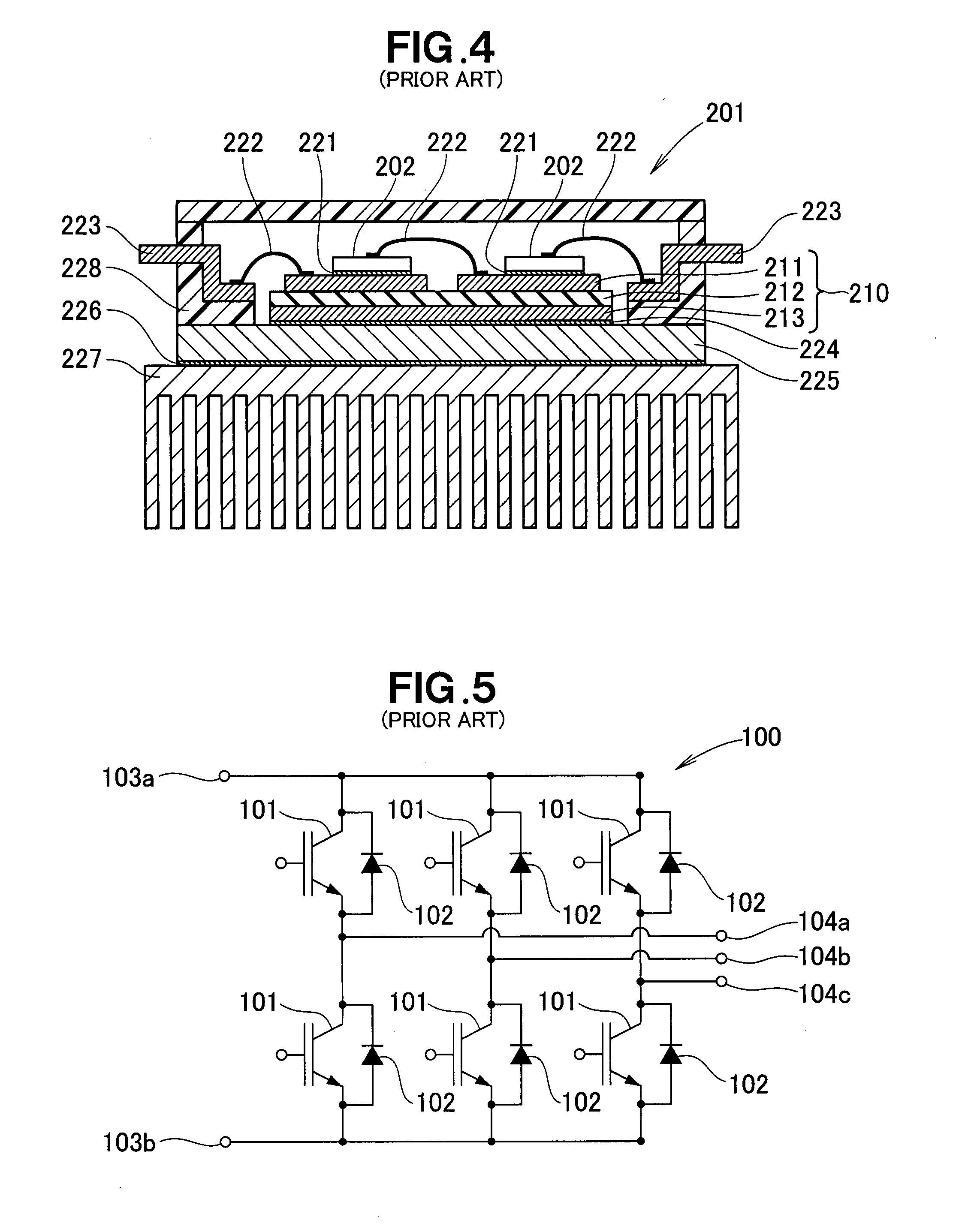Power semiconductor module
a technology of power semiconductor modules and semiconductor modules, applied in the direction of printed circuit aspects, stress/warp reduction of printed circuits, and the improvement of metal adhesion of the insulation substrate, can solve the problems of power semiconductor modules experiencing critical failures, solder and other materials themselves having insufficient heat resistance, and conventional mounting structures cannot be applied to high-temperature operation that exceeds 200° c. , to achieve the effect of reducing the volume of heat sinks
- Summary
- Abstract
- Description
- Claims
- Application Information
AI Technical Summary
Benefits of technology
Problems solved by technology
Method used
Image
Examples
first embodiment
[0058]In the power semiconductor module 10 loss can be reduced by half or more in the mounted SiC semiconductor power devices 13 in comparison with a conventional silicon semiconductor power device, and since higher temperature operation is made possible, the temperature difference between the outside air and the heat sink 12 can be doubled or more greatly increased. The size (volume) of the heat sink 12 can thereby be considerably reduced to about ⅕ the size of that in a conventional module.
[0059]Based on the above, the power semiconductor module 10 according to the first embodiment is a modular structure having the following three characteristics.
[0060]First, the circuit board 11 has a simple and multi-functional structure in which the metal substrate electrodes 14, insulation substrate 15, and heat sink 12 are integrated.
[0061]Second, since the heat stress produced in the circuit board 11 is very low, the mounted SiC semiconductor power devices 13 can operate at temperatures in ...
second embodiment
[0072]In the second embodiment, high ambient temperature resistance can be achieved even when AuSn solder 21 is used. This is because of the small difference in the average coefficients of thermal expansion between the SiC semiconductor power devices 13 and the metal substrate electrodes 14 of the integral circuit board 11. The difference is 3 ppm / ° C. or less at about 300° C., which is the joining temperature of AuSn 21 solder.
[0073]TABLE 2 below shows the results of joining SiC semiconductor power devices to two different types of circuit board structures by using AuSn solder, and performing a temperature cycle test in a temperature range of −40° C. to 200° C. Abnormalities were observed early in the test in the conventional structure, i.e., Al / AlN / Al, but abnormalities were not observed at 10,000 cycles in the structure of the present embodiment, i.e., Mo / AlN / CuC.
TABLE 2Temperature cycle test results for AuSnStructureResultsMo / AlN / CuC10,000 cycles with no abnormalitiesAl / AlN / AlCh...
PUM
 Login to View More
Login to View More Abstract
Description
Claims
Application Information
 Login to View More
Login to View More - R&D
- Intellectual Property
- Life Sciences
- Materials
- Tech Scout
- Unparalleled Data Quality
- Higher Quality Content
- 60% Fewer Hallucinations
Browse by: Latest US Patents, China's latest patents, Technical Efficacy Thesaurus, Application Domain, Technology Topic, Popular Technical Reports.
© 2025 PatSnap. All rights reserved.Legal|Privacy policy|Modern Slavery Act Transparency Statement|Sitemap|About US| Contact US: help@patsnap.com



